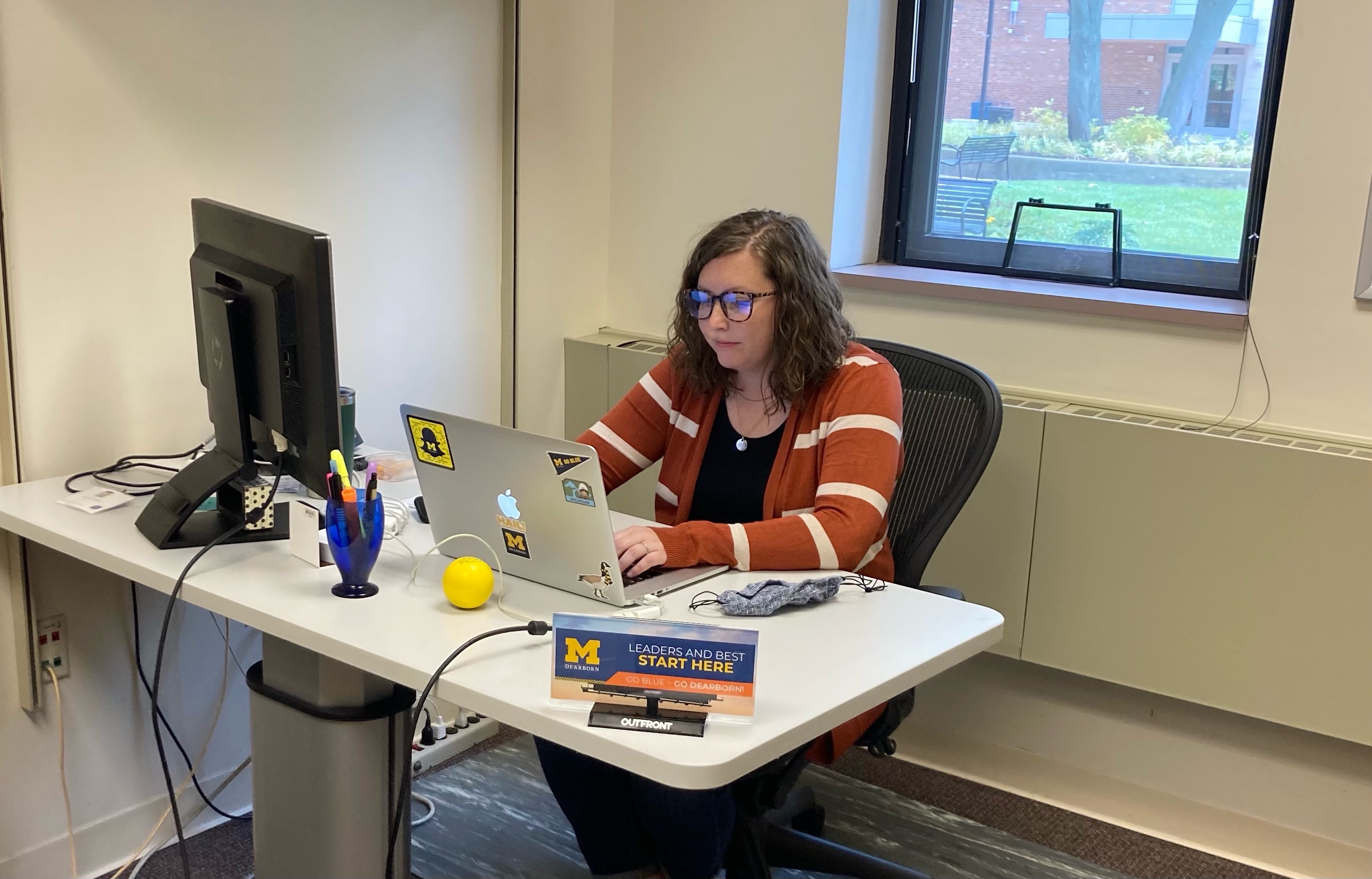But how do team leaders do both while still maintaining organizational identity and the social cohesion of a typical workplace setting? And what does this mean for the 8-5 office workday?
College of Arts, Sciences, & Letters Associate Dean and Professor Marie Waung, who’s spent three decades researching workplace psychology, explores what’s on the horizon for the 21st century office space, and gives suggestions for supervisors on how to support their teams’ return-to-work shifts.
“As humans, we like to be able to predict what will happen next. When change occurs, it tends to bring with it some degree of unpredictability, and with that some anxiety. This is why even small changes are difficult,” Waung said. “When change happens during a truly unprecedented time, it only adds to the unpredictability. The key is to clearly communicate and be flexible when possible.”
Supervisors should build in a transition period if possible.
Marie Waung: “To help people see what their new routine may look like, allow for a brief transition period if possible. This could be a week or two.
This transition time may be having people come into the office, but being flexible on in-person hours during that transition time. It could be having meetings in person, but individual work time at home. It depends on the situation. There’s not a one-size-fits-all transition plan. But no matter the plan, it’s important for supervisors to be clear in their policies and expectations, and be specific regarding how employee performance will be assessed.”
After the transition period, people will still be adjusting.
MW: “Changes to our daily routine are difficult — and work is a part of our daily routine. As for how long it takes to acclimate to a new routine, the rule of thumb that works for me is three weeks. It seems that most people can get used to most life changes over that time period.”
Consider mentors for employees new to your organization or who are early in their career.
MW: “Anecdotal evidence suggests working from home has been particularly challenging for people earlier in their careers. For example, recent college graduates experiencing their first post-college jobs may feel unsure of their performance and of employer expectations and have difficulty establishing workplace mentors and friends in a remote environment. Those hired in 2020 and 2021 are likely to seek workplace connections and search for mentors as they enter the physical workplace. Leaders may want to look for ways to facilitate connections.”
Be flexible when possible.
MW: “Getting up earlier to get ready for work, packing lunches and commuting take time and energy. These tasks used to be part of our routine, so we did not question them. However, now that we have experienced life without them, they may seem inconvenient and it’s likely many of us will be unenthusiastic about their return. People may also struggle with the work/life balance shift. Getting children to and from school, dog walking, doctor’s appointments and preparing dinner can become more challenging when working outside of the home.
People will have to figure out how to handle difficulties they experience — if you are on a hybrid schedule, one suggestion is try to stagger work days with a partner, family member, neighbor or friend who also has a hybrid schedule to help with life tasks — but manager flexibility definitely plays a role in job satisfaction.
On occasion, maybe it’s ok to let your team do an early morning meeting from Zoom at home. Or if an employee has a reason they can’t make it in, like their child’s school is unexpectedly closed or there are poor weather conditions, consider giving the option to work from home. I think that many employees are hoping for fewer white-knuckle commutes to work on icy or snowy mornings, reasoning that we have been able to quickly switch to remote work in the past and can do so, as needed, in the future.”
Team needs come first.
MW: “In some places of work, there will still need to be a critical mass of employees. It should be recognized by staff that supervisors must balance an adequate presence in the workplace to maintain operations and facilitate employee productivity and work quality.
But that’s not all that needs to be maintained. Team morale does too. In-person teams have advantages like an enhanced sense of community, quicker and more efficient communication, and access to more information through the grapevine — that’s what’s exchanged before and after face-to-face meetings or when employees bump into each other in the hallway. If too many employees are working from home on a given day, people in the workplace lose these advantages. One of my neighbors recently said he works two days a week from the office, but felt it was pointless because there are only a handful of employees there. That’s not good.
Supervisors likely want to work with their employees, but they are going to have to make some tough calls. They cannot grant a request if it negatively impacts team goals.”
Time will reveal what works best in our new world of work.
MW: “My prediction is most places that can have people work remotely will create a hybrid schedule that’s either three days at work and two at home, or two days at work and three at home. Finding what works best may be a little messy at first, but I believe changes will moderate themselves. Some things will work and some won’t. This is new for most of us, just try to be patient with each other.
After more than a year of staying constantly logged-in to work through email and Zoom, you might find that getting back to the workplace helps establish a firmer boundary between work and home life. Or you might discover that you need the independence that full remote work gives and are no longer a good fit where you are.
I think the 8-to-5 weekdays with everyone in the office at the same time is most likely a thing of the past. The pandemic has definitely shifted how we do work. But time will tell exactly how much.”
Interview by Sarah Tuxbury. Professor Marie Waung is an expert in organizational and industrial psychology, focusing on areas like professional development, employee promotion and productive workplace processes. If you are a member of the media and would like to speak with her, please let us know at [email protected].






